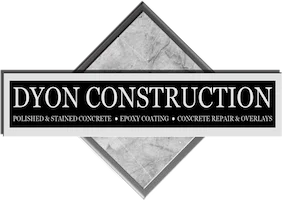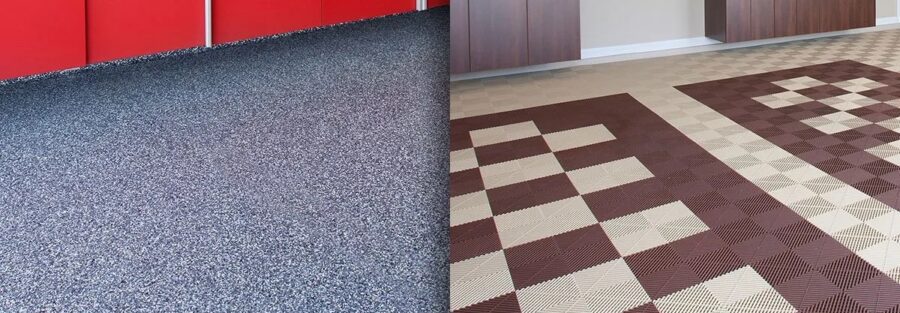Introduction
Choosing the right flooring for your home or commercial space is a decision that blends aesthetics, functionality, and budget considerations. Epoxy flooring and tile flooring are two popular choices, each offering unique benefits and challenges. This article will explore the characteristics of epoxy and tile flooring, weighing their pros and cons to help you determine the best fit for your specific needs.
Overview of Epoxy Flooring
Epoxy flooring is a surface covering made from a combination of resin and hardeners, creating a rigid plastic material that bonds exceptionally well to concrete substrates. Known for its seamless finish and high-gloss appearance, epoxy flooring is not only visually striking but also highly functional. It is often used in industrial and commercial environments due to its durability and resistance to chemicals, stains, and abrasions. Homeowners have also started adopting epoxy flooring for areas like garages, basements, and even kitchens, thanks to its sleek look and practical benefits.
Overview of Tile Flooring
Tile flooring, a timeless choice, encompasses a variety of materials including ceramic, porcelain, stone, and glass. Each tile is individually set on a mortar bed and joined with grout lines, creating a patterned or mosaic finish that can range from rustic to contemporary. Tiles are renowned for their versatility in design, coming in an array of colors, shapes, sizes, and textures. This flooring option is favored in areas with high moisture such as bathrooms and kitchens, due to its water resistance and ease of cleaning. Tile flooring is not only durable but also adds a touch of elegance and sophistication to any space.
Pros and Cons of Epoxy Flooring
Pros
Epoxy flooring boasts several advantages. Its durability is perhaps its most significant attribute. The hardened surface can withstand heavy foot traffic, machinery, and even vehicular loads without showing signs of wear. Its resistance to chemicals and stains makes it ideal for areas prone to spills and potential damage. Furthermore, the seamless surface of epoxy flooring means there are no grout lines where dirt and bacteria can accumulate, making it exceptionally easy to clean and maintain. The aesthetic appeal of epoxy cannot be understated, as it offers a sleek, high-gloss finish that can be customized with various colors and patterns, including metallic and flake finishes.
Cons
However, epoxy flooring is not without its drawbacks. The installation process can be complex and time-consuming, often requiring professional application to ensure a flawless finish. Once installed, epoxy floors can be slippery when wet, posing a potential safety hazard. While durable, epoxy can still chip or crack under severe impact, and repairs can be challenging and costly. Additionally, epoxy flooring can yellow or fade over time with exposure to UV light, making it less suitable for areas with significant sunlight.
Pros and Cons of Tile Flooring
Pros
Tile flooring offers numerous benefits that make it a popular choice. Its versatility in design allows for endless creative possibilities, enabling homeowners to achieve virtually any look they desire. Tiles are inherently water-resistant, making them ideal for bathrooms, kitchens, and other moisture-prone areas. The durability of tiles, particularly porcelain and stone, ensures a long lifespan with proper care. Maintenance is straightforward, as tiles can be easily cleaned with basic household cleaners, and individual tiles can be replaced if damaged without affecting the entire floor.
Cons
Despite its advantages, tile flooring has its own set of challenges. The installation process can be labor-intensive and requires a high level of skill to ensure even, secure placement of each tile. The grout lines between tiles can become stained and may require periodic sealing to prevent moisture penetration and mildew growth. Tiles can be cold and hard underfoot, which might be uncomfortable in living areas without underfloor heating. Additionally, while durable, tiles can crack or chip under heavy impact, and finding matching replacements can sometimes be difficult.
Cost Comparison
When comparing costs, epoxy flooring generally has a higher upfront cost due to the materials and professional installation required. However, its longevity and minimal maintenance can make it cost-effective over time. Tile flooring can range widely in price depending on the material chosen, with ceramic being more affordable and natural stone being on the higher end. Installation costs for tile can also be significant due to the labor-intensive process. Both options offer durability, but the long-term costs should factor in potential maintenance and repairs.
Installation Process
The installation of epoxy flooring involves several steps, including surface preparation, application of primer, mixing and applying the epoxy resin, and allowing it to cure. This process can take several days and requires precise conditions to ensure a successful application.
Tile installation is similarly detailed, involving surface preparation, laying out the tiles, applying adhesive, setting the tiles, grouting, and sealing. This process can also take several days and requires meticulous attention to detail to achieve a professional finish. Both installations are best handled by professionals to ensure durability and aesthetic quality.
Maintenance and Durability
Epoxy flooring is relatively low-maintenance, requiring regular sweeping and occasional mopping with a mild detergent. Its seamless surface makes it easy to clean, and its durability ensures it can withstand heavy use without significant wear.
Tile flooring also requires regular sweeping and mopping, but the grout lines can become a maintenance issue. Periodic sealing of the grout is necessary to prevent staining and moisture damage. In terms of durability, both flooring options are robust, but tile can crack under heavy impact, while epoxy may chip or peel.
Conclusion
Choosing between epoxy flooring and tile flooring depends on your specific needs, budget, and aesthetic preferences. Epoxy flooring offers a sleek, durable, and low-maintenance option, ideal for areas requiring resilience and a modern look. Tile flooring, with its vast array of designs and materials, provides versatility and a timeless appeal, suitable for both high-moisture areas and living spaces. By carefully considering the pros and cons of each option, you can select the flooring that best enhances the beauty and functionality of your space.

